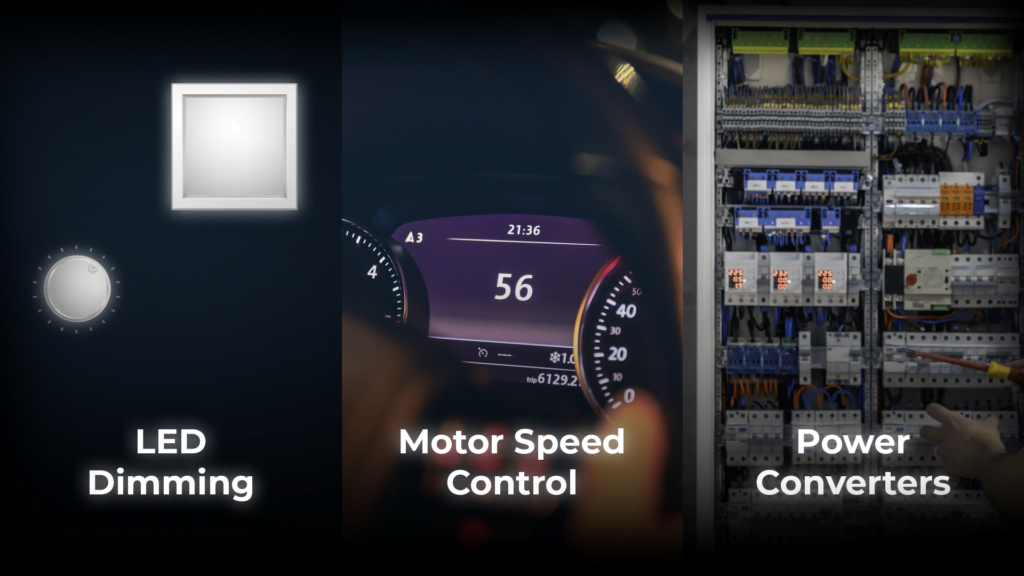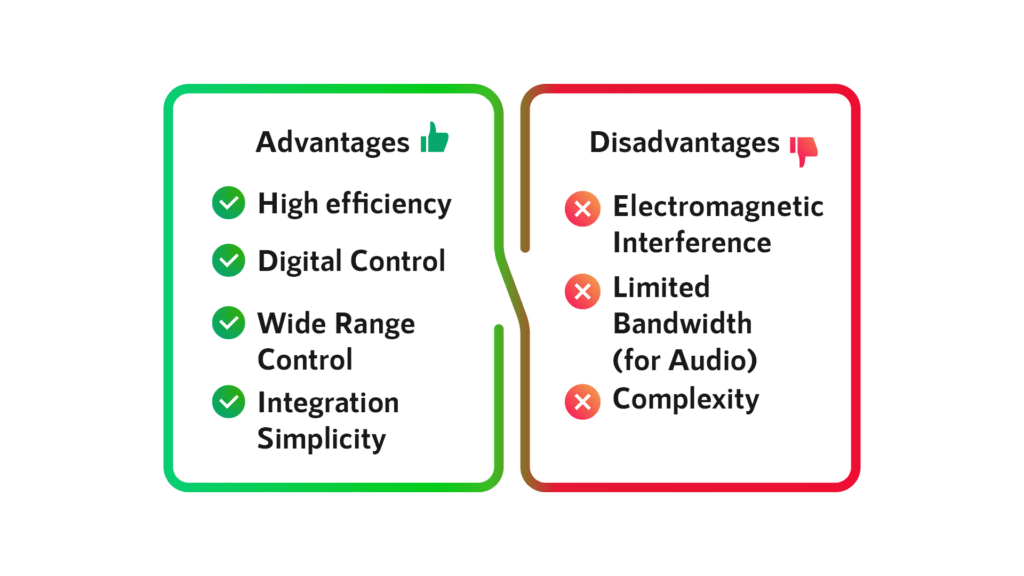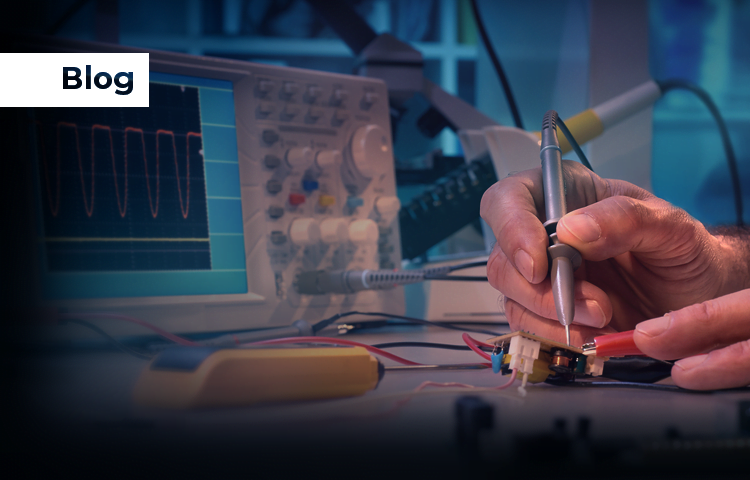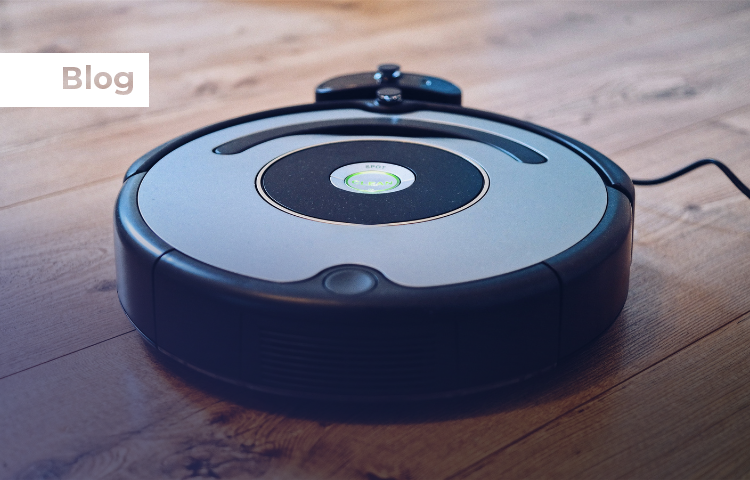Pulse Width Modulation (PWM) is a fundamental technique employed in electronics to control the average power delivered to a load. This is achieved by rapidly switching a digital signal between on and off states. In simpler terms, PWM allows for achieving analog-like control using the simplicity and efficiency of digital signals. This widespread technique finds application in various areas, including dimming home lights with a dimmer switch, controlling the speed of powerful electric vehicle motors, and even generating simple sound effects in video games.
Understanding the Basics
Imagine the dimmer switch used to control the brightness of living room lights. When turned fully clockwise, the light bulb receives a constant flow of electricity, resulting in maximum brightness (high power). As the knob is rotated counter-clockwise, the connection between the bulb and the power source is interrupted more frequently. This translates to the bulb receiving “pulses” of electricity with shorter “on” times and longer “off” times, leading to a dimmer glow (lower power).
This is the essence of pulse width modulation! Here is a breakdown of the key aspects involved:
- Digital Signal: The foundation of PWM is a digital signal, typically a square wave. This signal can be either high (representing on) or low (representing off).
- Duty Cycle: A crucial parameter in PWM, the duty cycle refers to the percentage of time the signal spends in the high state within a single cycle. A 50% duty cycle signifies that the signal is on for half the cycle and off for the other half. Similar to how the dimmer switch controls the on/off duration of electricity flow to the bulb, the duty cycle in PWM determines the average power delivered to the load.
- Average Power: By varying the duty cycle, the average power delivered to the load can be controlled. A higher duty cycle translates to more “on” time, resulting in higher average power (brighter light in the dimmer switch analogy). Conversely, a lower duty cycle translates to less “on” time and lower average power (dimmer light).
How Does Pulse Width Modulation Work? A Step-by-Step Breakdown
While the dimmer switch analogy provides a good starting point, let us delve deeper into the technical workings of PWM:
- Digital Signal Generation: A microcontroller or dedicated circuit generates a digital square wave signal. Imagine this as the control knob on the dimmer switch sending a series of on/off instructions.
- Duty Cycle Adjustment: The duty cycle of the signal is adjusted based on the desired average power output. This adjustment is like fine-tuning the position of the dimmer switch knob.
- Driving Circuit: The digital signal is then fed into a driving circuit, which amplifies the signal to control the power delivered to the load. This circuit acts like the internal mechanism within the dimmer switch that translates the knob position into actual control of the electricity flow.
- Load Response: Depending on the load (e.g., LED, motor), the average power translates into the desired effect, such as varying brightness or speed. Just like the dimmer switch affects the light bulb’s brightness, the varying power levels from the PWM signal control the behavior of the connected device.
Real-World Examples
The extensive applications of PWM touch upon many aspects of our daily lives.

- LED Dimming: As previously discussed, Pulse Width Modulation (PWM) is the preferred technique for LED dimming due to its efficiency and precision control. By varying the duty cycle of the PWM signal that drives the LED, the effective average current through the LED is modulated, thereby adjusting its brightness. This method ensures smooth and responsive brightness control in various electronic devices. In practical applications, PWM control is utilized to modulate the intensity of light incident on a photodiode-based light sensor such as the ISL29035. This setup not only allows for precise control of light intensity but also enables the monitoring of lux levels across different lighting conditions. Try the live lab for an in-depth exploration and real-time observation of PWM signals used in light dimming applications.
- Motor Speed Control: Imagine a remote-controlled toy car. The speed control lever on the remote most likely utilizes PWM to regulate the motor’s speed. This is achieved by varying the duty cycle of the signal driving the motor, which adjusts the average voltage supplied and leads to changes in motor speed. This allows for smooth and precise control over the car’s movement. In practical applications, PWM signals are used to regulate the rotational speed of motors in various devices, ranging from household appliances to industrial machinery. For an in-depth exploration and real-time observation of PWM signals used in motor speed control applications, visit the LiveBench. One of our featured setups includes a high-voltage power train system with modularly integrated wired/wireless charging (ISL81801 and P9415), a battery management system (ISL94216), and optional Bluetooth wireless connectivity (RX23W).
- Power Converters: A complex circuit called a DC-DC converter, located inside laptops or smartphone chargers, regulates the output voltage. PWM plays a crucial role here. By adjusting the duty cycle of the switching signal within the converter, the circuit can maintain a constant output voltage despite variations in the input voltage from the wall outlet. In practical applications, the ISL81801EVAL1Z evaluation board features the ISL81801, an 80V high voltage synchronous buck-boost controller. To explore and observe the role of PWM in DC-DC converters, visit the the live lab with advanced setups, including a high-voltage power train system to see firsthand how PWM technology ensures efficient and stable voltage regulation in sophisticated electronic applications.
Audio Generation, Battery Management, and Beyond: Exploring More Applications
While dimming lights and controlling motor speeds are common applications, the versatility of pulse width modulation extends far beyond these examples.
- Simple Audio Generation: Surprisingly, PWM can be used for basic audio generation. Audible tones can be created by rapidly varying the duty cycle of a high-frequency signal. This technique is often employed in simple sound chips for greetings on greeting cards or rudimentary sound effects in games. However, the quality is limited compared to dedicated audio solutions that utilize Digital-to-Analog Converters (DACs).
- Battery Management Systems: Ensuring optimal battery life and safe operation is crucial in various devices, ranging from laptops to electric vehicles. PWM can be employed to control battery charging and discharging currents. This is achieved by adjusting the duty cycle of the signal driving the charging/discharging circuit, which allows the system to regulate the amount of current flowing into or out of the battery. This helps prevent overcharging or excessive discharge, extending battery life and enhancing safety.
- Display Backlight Control: The brightness of smartphones or LCD monitor screens are often adjustable. This functionality is frequently achieved using PWM to control the backlight intensity. By varying the duty cycle of the signal driving the backlight LEDs, the display brightness is adjusted to preference.
- Class-D Audio Amplifiers: While not directly generating the audio signal itself, PWM finds application in a specific type of audio amplifier called a Class-D amplifier. These amplifiers offer high efficiency by operating the output stage in switching mode (on or off). PWM plays a role in controlling the switching pattern of the output transistors based on the input audio signal, achieving efficient power delivery to the speakers.
Advantages and Limitations of Using Pulse Width Modulation

Advantages of Using PWM
Several compelling reasons exist to leverage PWM in various electronic designs:
- High Efficiency: Compared to traditional analog control methods like using resistors to adjust brightness or motor speed, PWM offers significantly higher efficiency. Because the load is either fully on or off during each cycle, minimal power is wasted in the control circuit itself. This translates to improved battery life in portable devices and lower energy consumption in other applications.
- Digital Control: The beauty of PWM lies in its ability to exploit the simplicity and precision of digital signals. Microcontrollers or dedicated PWM controllers can be used to generate and adjust the PWM signal precisely. This allows for accurate and reliable control over various parameters.
- Wide Range Control: PWM offers a wide dynamic range for controlling the average power delivered to the load. By adjusting the duty cycle from 0% to 100%, fine-grained control over various parameters like LED brightness or motor speed can be achieved. This flexibility makes PWM suitable for a wide variety of applications.
- Integration Simplicity: PWM can be implemented with a wide range of electronic components. Microcontrollers often have built-in PWM generators, and various driver circuits are readily available to interface PWM signals with different types of loads. This ease of integration makes PWM a popular choice for designers.
Limitations of Using PWM
While highly beneficial, it is important to consider some limitations of PWM:
- Electromagnetic Interference (EMI): The rapid switching nature of the signal in PWM can generate electromagnetic interference (EMI) if not properly managed. This EMI can interfere with the operation of other electronic devices nearby. To mitigate this, filtering techniques are often employed in PWM circuits.
- Limited Bandwidth (for Audio): As mentioned earlier, while PWM can be used for simple audio generation, the achievable sound quality is limited. PWM-generated audio signals have a limited bandwidth and lack the fidelity of traditional audio generation methods using DACs. This is why it is primarily used for basic sound effects or greetings where high-fidelity audio is not essential.
- Complexity: While the core concept of PWM is straightforward, implementing complex PWM control schemes with varying duty cycles and multiple channels can add complexity to the design. Careful circuit design and programming expertise may be required.
Exploring Pulse Width Modulation (PWM) on LiveBench
LiveBench is a cloud-based testing platform specifically designed for evaluating electronic components and circuits. It offers access to real hardware labs equipped with various devices and instruments, making it an ideal platform to delve deeper into exploring and experimenting with PWM control. Here’s how LiveBench can be leveraged to enhance understanding of PWM:
- Testing Different PWM Generators: LiveBench may provide access to labs containing various microcontrollers or dedicated PWM controllers. Experimentation with generating PWM signals from these different sources and observing their characteristics can be conducted.
- Analyzing Load Response: By connecting various loads (e.g., LEDs, motors) to the PWM output in a LiveBench lab, the real-time response of the load to varying duty cycles can be analyzed. This allows for visualization of how PWM translates into changes in brightness, speed, or other parameters.
- Exploring Advanced Techniques: LiveBench could potentially provide access to circuits showcasing more advanced PWM applications, such as Class-D audio amplifier designs. This would allow for observation of how PWM interacts with other components in a real-world setting.
LiveBench offers a valuable opportunity to progress beyond theoretical concepts and gain practical experience with PWM in a remote testing environment. This can significantly enhance learning and solidify understanding of this versatile technique.
Pulse Width Modulation – A Powerful Tool in the Electronics Engineer’s Toolkit
Pulse Width Modulation (PWM) is a versatile and powerful technique that bridges the gap between the digital and analog worlds. Its ability to achieve precise control over power delivery using digital signals makes it a valuable tool for various electronic applications. From dimming the lights in homes to controlling the speed of powerful motors and even generating simple sounds, PWM is a fundamental building block in many modern electronic devices. As technology evolves, we can expect even more innovative applications of PWM to emerge, shaping the future of electronics design.
Furthermore, platforms like LiveBench offer exciting opportunities to explore PWM in a hands-on manner. By remotely connecting to real hardware labs and experimenting with various PWM functionalities, engineers can gain practical experience and solidify their understanding of this essential technique. With continued exploration and innovation, PWM promises to remain a cornerstone in the ever-evolving realm of electronics.





